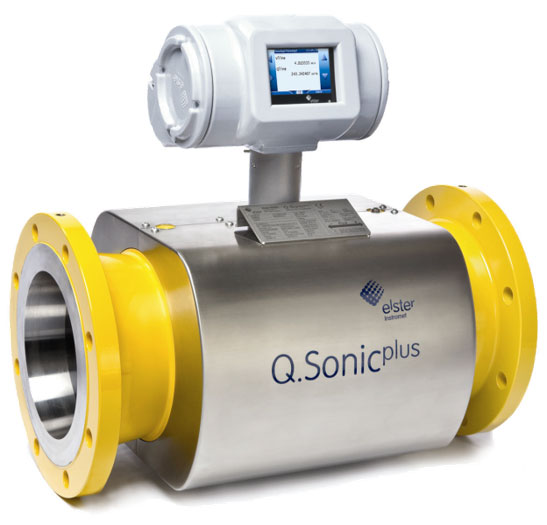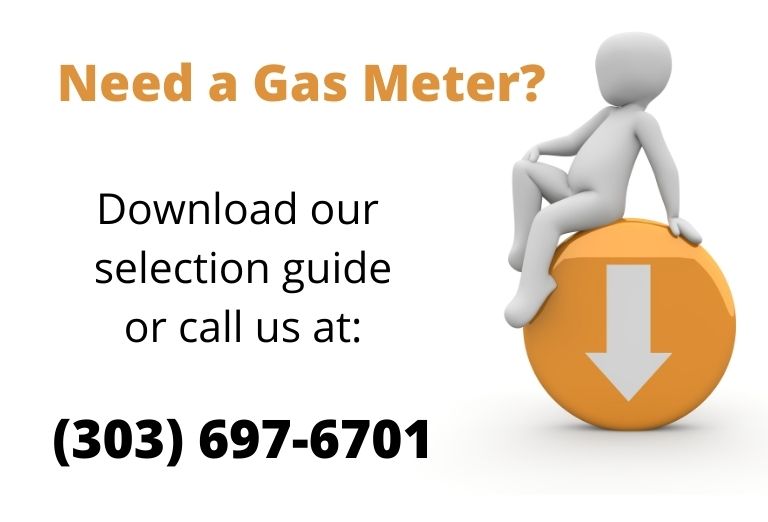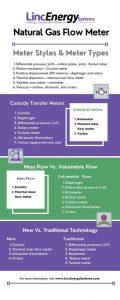The Pros and Cons of the Ultrasonic Gas Flow Meter
An ultrasonic gas flow meter measures natural gas for custody transfer and is used throughout the network in gathering, transmission, and distribution. Here we discuss the pros and cons of ultrasonic flowmeters.
The ultrasonic gas flow meter is a velocity-type flow meter, a classification of meters that includes turbine meters and vortex meters.

The Elster-Instromet Q.Sonic-plus ultrasonic meter works well for custody transfer of natural gas and other gas exploration, transmission, and distribution applications.
Ultrasonic Gas Flow Meter
This article focuses on inline ultrasonic meters, not clamp-on. Clamp-on ultrasonic models are not approved in the U.S. for custody transfer. They are nonintrusive as the transmitters clamp to the outside of the pipe. They are less accurate (about 1%) than the inline meter and are used for monitoring, check metering, temporary flow measurement, and leak detection.
Here we discuss the advantages and disadvantages of ultrasonic flowmeters.
Pros and Cons of the Ultrasonic Gas Flow Meters
3 Advantages
- Ultrasonic flow meters perform well in large pipe sizes. In most cases, ultrasonic meters are the better choice for 6-inch pipes and larger over Coriolis. Most Coriolis meters serve two inches or smaller pipe sizes, becoming expensive and unmanageable in larger line sizes.
- Ultrasonic flow meters can measure the flow of nonconductive liquids, gases, and steam, but magnetic meters have limitations. Given that oil and gas production, transportation, and refining industries fluids are nonconductive, the ultrasonic flowmeter excels in that market.
- Ultrasonic meters have high overall performance. They are highly accurate, repeatable, and tolerate extreme temperatures. They offer high rangeability and can measure in low- and high-flow conditions. They provide long-term reliability and require little maintenance because they have no moving parts. In addition, they are self-diagnosing, and once calibrated, they can determine measurement shifts. The clamp-on models also offer flexibility and easy installation without penetrating the pipe.
3 Disadvantages
- Ultrasonic meters have high initial costs.
- Dirty gas degrades the meter’s accuracy, though ultrasonic flowmeters handle impurities better than turbine meters.
- Sound, even noise outside of human perception, can interfere with the sonic pulses.
4 Ultrasonic Flowmeter Manufacturers
- Emerson Daniel
- Honeywell Elster Instromet
- FMC Technologies
- Cameron
Elster Instromet Ultrasonic Flow Meters
We are an authorized distributor for Honeywell Elster Instromet ultrasonics: Q.Sonic, Q.Sonic-Plus, and TwinSonic-Plus. If you want an ultrasonic flow meter, submit your inquiry here.
 Ultrasonic Gas Flowmeter Video
Ultrasonic Gas Flowmeter Video
This article is a continuing series on types of gas flow meters. You may have an interest in related posts:



